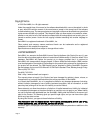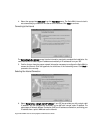
Page 18 SonicWALL Internet Security Appliance Administrator’s Guide
2 Configuring the Network Mode on the SonicWALL
The SonicWALL Internet security appliance allows the following common network configurations:
Standard, NAT Enabled, NAT with PPPoE Client, NAT with DHCP Client, NAT with L2TP Client, and NAT
with PPTP Client are included in this chapter.
Standard Mode
Configuring the SonicWALL in Standard mode requires a static IP address from your ISP. In this
mode, you must have separate static IP addresses for all computers on your network.
Instructions for configuring a SonicWALL in Standard mode begin on page 19.
Network Address Translation (NAT) Enabled
Using NAT to set up your SonicWALL eliminates the need for separate IP addresses for all computers
on your LAN. It is a way to conserve IP addresses available from the pool of IPv4 addresses for the
Internet. If you do not have enough individual IP addresses for all computers on your network, you
can use NAT for your network configuration.
Instructions for configuring NAT Enabled mode begin on page 20.
NAT with PPPoE Client
NAT with PPPoE Client is a network protocol that uses Point to Point Protocol over Ethernet (PPPoE)
to connect with a remote site using various Remote Access Service products. This protocol is
typically found when using a DSL modem with an ISP requiring a user name and password to log into
the remote server. The ISP may then allow you to obtain an IP address automatically or give you a
specific IP address.
Instructions for configuring NAT with PPPoE Client mode begin on page 26.


















